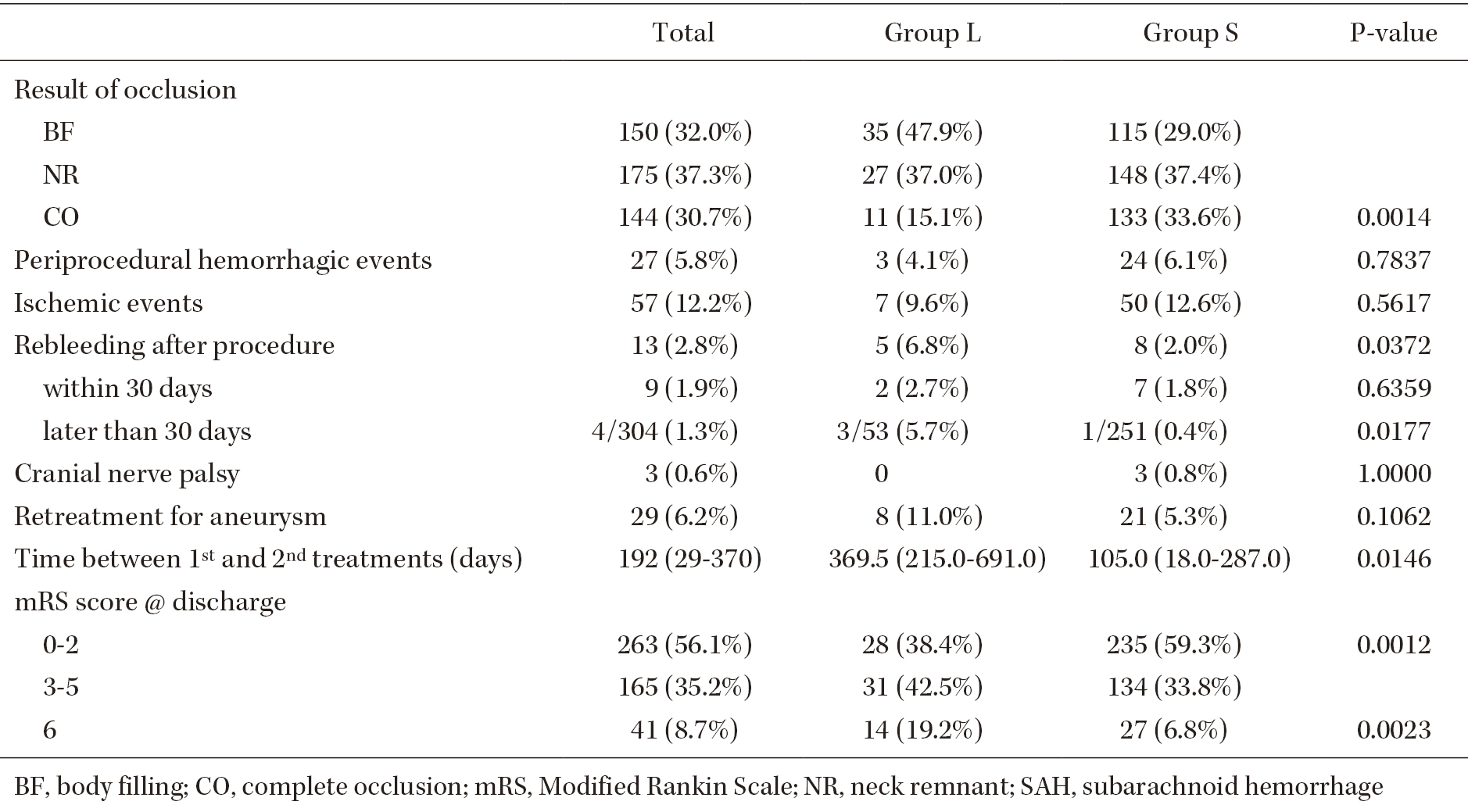6 0 0 0 OA Acute Distal Migration and Shortening of the Flow-Redirection Endoluminal Device: A Case Report
- 著者
- Yasuhiko Nariai Tomoji Takigawa Akio Hyodo Kensuke Suzuki
- 出版者
- The Japanese Society for Neuroendovascular Therapy
- 雑誌
- Journal of Neuroendovascular Therapy (ISSN:18824072)
- 巻号頁・発行日
- pp.cr.2023-0011, (Released:2023-05-26)
- 参考文献数
- 24
Objective: The flow diverter (FD) is a promising device. Apart from two main complications, hemorrhagic and ischemic ones, stent migration is reportedly an unusual complication. In particular, distal migration of the FD has rarely been reported. We report a case of asymptomatic acute distal migration of the flow-redirection endoluminal device (FRED).Case Presentation: A 50-year-old woman was incidentally diagnosed with an unruptured right internal carotid–ophthalmic artery aneurysm with a maximum diameter of 8.0 mm, and she subsequently underwent endovascular treatment with FRED. Based on the vessel diameter (3.8 mm proximal and 3.6 mm distal to the aneurysm), a 4.0-mm-diameter and 18-mm-long FRED was deployed without postoperative complications. However, on MRA 12 months after treatment, the aneurysm was not occluded; angiography showed distal migration of the FRED. The postoperative MRA and skull X-ray images were retrospectively reviewed to determine the period of the migration. The skull X-ray images and the signal loss area due to the FRED on MRA 1 day after the treatment had already demonstrated the migration of the FRED. In the second treatment, a 4.0-mm-diameter and 23-mm-long FRED was deployed in an overlapping fashion up to the proximal part of the carotid siphon. Prompt identification of distal migration of the FD without neurologic signs could be challenging.Conclusion: It is important to follow up meticulously with MRA and skull X-ray images after FD treatment for detecting stent migrations as early as possible.
- 著者
- Takao KOISO Yoji KOMATSU Daisuke WATANABE Go IKEDA Hisayuki HOSOO Masayuki SATO Yoshiro ITO Tomoji TAKIGAWA Mikito HAYAKAWA Aiki MARUSHIMA Wataro TSURUTA Noriyuki KATO Kazuya UEMURA Kensuke SUZUKI Akio HYODO Eichi ISHIKAWA Yuji MATSUMARU
- 出版者
- The Japan Neurosurgical Society
- 雑誌
- Neurologia medico-chirurgica (ISSN:04708105)
- 巻号頁・発行日
- pp.2022-0253, (Released:2023-01-05)
- 参考文献数
- 15
The influence of aneurysm size on the outcomes of endovascular management (EM) for aneurysmal subarachnoid hemorrhages (aSAH) is poorly understood. To evaluate the outcomes of EM for ruptured large cerebral aneurysms, we retrospectively analyzed the medical records of patients with aSAH that were treated with coiling between 2013 and 2020 and compared the differences in outcomes depending on aneurysm size. A total of 469 patients with aSAH were included; 73 patients had aneurysms measuring ≥10 mm in diameter (group L), and 396 had aneurysms measuring <10 mm in diameter (group S). The median age; the percentage of patients that were classified as World Federation of Neurological Surgeons grade 1, 2, or 3; and the frequency of intracerebral hemorrhages differed significantly between group L and group S (p = 0.0105, p = 0.0075, and p = 0.0458, respectively). There were no significant differences in the frequencies of periprocedural hemorrhagic or ischemic events. Conversely, rebleeding after the initial treatment was significantly more common in group L than in group S (6.8% vs. 2.0%; p = 0.0372). The frequency of a modified Rankin Scale score of 0-2 at discharge was significantly lower (p = 0.0012) and the mortality rate was significantly higher (p = 0.0023) in group L than in group S. After propensity-score matching, there were no significant differences in complications and outcomes between the two groups. Rebleeding was more common in large aneurysm cases. However, propensity-score matching indicated that the outcomes of EM for aSAH may not be affected markedly by aneurysm size.
- 著者
- Yasunobu NAKAI Yoshiro ITO Masayuki SATO Kazuhiro NAKAMURA Masanari SHIIGAI Tomoji TAKIGAWA Kensuke SUZUKI Go IKEDA Satoshi IHARA Toshiyuki OKUMURA Masashi MIZUMOTO Koji TSUBOI Akira MATSUMURA
- 出版者
- 社団法人 日本脳神経外科学会
- 雑誌
- Neurologia medico-chirurgica (ISSN:04708105)
- 巻号頁・発行日
- vol.52, no.12, pp.859-864, 2012 (Released:2012-12-25)
- 参考文献数
- 26
- 被引用文献数
- 3
A total of 29 cerebral arteriovenous malformations (AVMs) treated at the University of Tsukuba with multimodality treatment including proton beam (PB) radiotherapy for cerebral AVMs between 2005 and 2011 were retrospectively evaluated. Eleven AVMs were classified as Spetzler-Martin grades I and II, 10 as grade III, and 8 as grades IV and V. For AVMs smaller than 2.5 cm and located on superficial and non-eloquent areas, surgical removal with/without embolization was offered as a first-line treatment. For some small AVMs located in deep or eloquent lesions, gamma knife (GK) radiosurgery was offered. Some AVMs were treated with only embolization. AVMs larger than 2.5 cm were embolized to achieve reduction in size, to enhance the safety of the surgery, and to render the AVM amenable to GK radiosurgery. For larger AVMs located in deep or eloquent areas, PB radiotherapy was offered with/without embolization. Immediately after the treatment, 24 patients exhibited no neurological worsening. Four patients had moderate disability, and 1 patient had severe disability. Three patients suffered brain damage after surgical resection, and 2 patients suffered embolization complications. However, no neurological worsening was observed after either GK radiosurgery or PB radiotherapy, but 3 patients treated by PB radiotherapy suffered delayed hemorrhage. Fractionated PB radiotherapy for cerebral AVMs seems to be useful for the treatment of large AVMs, but careful long-term follow up is required to establish the efficacy and safety.
